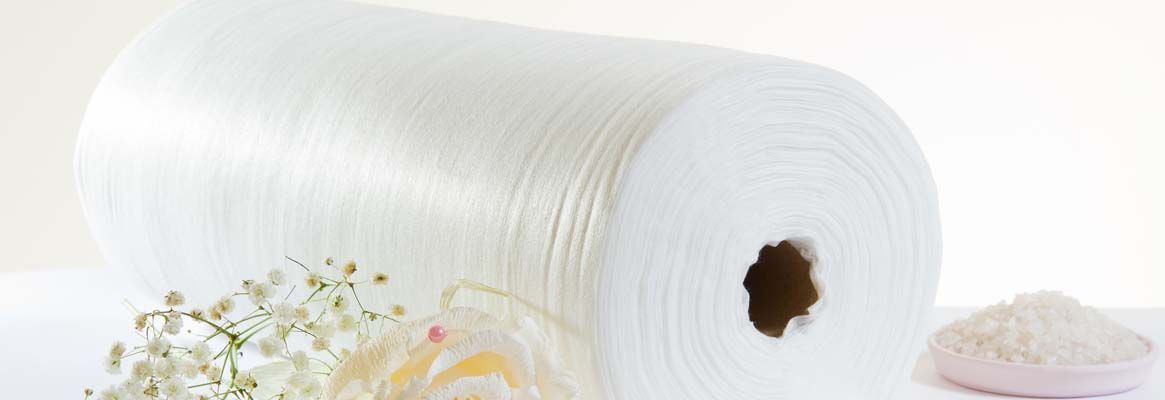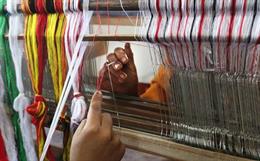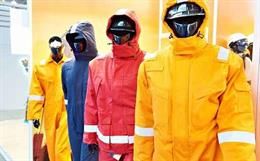Introduction
The basis oftissue engineering is to develop or regenerate new tissues from the organ (ortissue) of interest on porous, biodegradable scaffolds by culturingisolated cells. A 3D structure that aids in the process of tissue engineeringby providing a location for cells to attach to, proliferate in threedimensions, distinguish and secrete an extra-cellular matrix, ultimatelyleading to tissue formation, are known as scaffolds. The scaffold acts as anextracellular matrix for cell adhesion and regeneration or growth.
Usually,scaffolds serve at least one of the following purposes:
A tissuescaffold is a highly porous, artificial cellular matrix. Because of theirinherent properties, textiles have a major role to play in making this scaffold. Ascaffold can be broadly categorised into three groups based on the processingmethods: foams, 3D printed substrates and textile structures. Textilestructures form an important class of porous scaffolds used in tissueengineering.
| Tissue engineered biological substitute | Scaffold structures |
| Bladder | Nonwovens |
| Blood vessel | Woven, knitted, braided, nonwoven |
| Bone | Nonwovens, foam |
| Cartilage | Nonwovens |
| Dental | Foam (porous membrane), nonwoven |
| Heart valve | Woven, nonwoven |
| Tendon | Woven, nonwoven |
| Ligament | Yarn, braided, nonwoven |
| Liver | Foam, nonwoven, 3D printed |
| Nerve | Foam, nonwoven |
| Skin | Foam, woven |
Using tissue engineering approach to make biological substitutes fundamentally includes the following phases:
1. Scaffold material selection
2. Fabrication of scaffold
3. Preparation of scaffold
4. Cell harvest from human or animal
5. Cell seeding onto the scaffold
6. Cell proliferation and differentiation
7. Growth of mature tissue
8. Surgical transplantation
9. Implant adaptation and assimilation
Scaffold Design Parameters
An ideal scaffold system possesses the following features.
• Material should be biocompatible, ultra-pure, and easily reproducible into a variety of sizes and structures.
• In a majority of applications, the support of a scaffold is required only for a limited period of time. However, these temporary scaffolds cannot be removed easily because of tissue grown into its porous structure. Hence, scaffolds require to be manufactured from a biodegradable material in which the degradation rate has to be accustomed to match the rate of tissue formation. Also, the scaffold has to sustain its volume, mechanical stability and structure long enough to allow ample formation of tissue inside the scaffold, keeping in mind that the degraded products should not provoke toxicity or inflammation.
• Structure of scaffolds must be reproducible at macroscopic and microscopic levels with a high surface area to volume ratio in order to permit a significant amount of cell surface interaction.
• The pore size of scaffolds should be optimal to allow cells to grow in multiple layers in order to form a three-dimensional structure.
• Porosity of pore size reflects the interconnectivity of the scaffold, i.e. high porosity maximises the volume of tissue in growth and minimises the amount of material being used.
• Scaffold surface should be appropriate for cell proliferation and cell attachment.
• The suppleness of a scaffold ought to be near to that of its neighbouring tissue, so that once the vascularisation starts, no intense change in the mechanical properties between the scaffold and the host tissue can be experienced by the new growing tissues.
Hence, for a scaffold to perform efficiently, it must possess the optimum structural parameters, favourable to cellular activities leading to new tissue formation, cell penetration, migration and cell attachment onto the scaffold surface. The following table describes the scaffold design parameters with reference to the cellular activities.
|
Scaffold functional requirement |
Scaffold design parameters |
|
Not to incite toxicity or inflammatory response |
Non-carcinogenic, non-toxic and biocompatible |
|
Aid in the growth of three-dimensional tissue |
Three dimensional scaffold of required shape |
|
Support a evenly high cell seeding density |
High porosity and good interconnectivity between them |
|
Encourage cell proliferation and migration resulting into tissue growth throughout the scaffold |
Optimum pore size for allowing cell penetration, with high porosity and interconnectivity |
|
To guide the cellular orientation of the new tissues |
Right fibre orientation within the scaffold |
|
Allow the movement of waste and nutrients in and out of the scaffold |
High porosity and good interconnectivity between the pores |
|
Scaffold should degrade leaving only the natural tissue |
Match rate of degradation and tissue formation also degraded products must not be toxic |
|
Acquire sufficient structural integrity and good mechanical strength to retain shape and support developing tissues |
Scaffold should match with the mechanical properties of the new developing tissue |
Textile scaffolds
As cells cannot survive on their own and are substrate-dependent, the need for scaffolds in tissue engineering is undisputed. However, no single universal scaffold can meet all the requirements of various tissues and hence the choice of scaffold for a tissue depends on its characteristics. The following are some aspects which need to critically examine for the selection of textile scaffolds.
1. Microstructural aspects
Porosity, pore size, pore size distribution, reproducibility of pores and pore connectivity are included in the microstructural aspects of scaffolds. These are fundamental as they determine the successful integration of the natural tissue and the scaffold and provide optimal spatial and nutritional conditions for the cells. The reproducibility of scaffolds decides their dimensional stability as well as the uniformity of the tissue formation. The following table compares the different microstructural aspects of textile structures with foams.
|
|
|
Textile structures |
|||
|
Fabrication |
Foam |
Non-woven |
Woven |
Braid |
Knit |
|
Pore size(m) |
0.5-500 |
10-1000 |
0.5-1000 |
0.5-1000 |
50-1000 |
|
Porosity (%) |
0-90 |
40-95 |
30-90 |
30-90 |
40-95 |
|
Reproducibility of porosity |
Poor to good |
Poor |
Excellent |
Excellent |
Good to excellent |
|
Pore connectivity |
Good |
Good |
Excellent |
Excellent |
Excellent |
|
Processability |
Good |
Good |
Excellent |
Excellent |
Good |
|
Other comments |
Current techniques are associated with processing undesirable residues such as solvents, salt particles |
Equipment cost is high.
|
Shapes are limited |
Limited to tubular or uniform cross- sectional shapes |
Limited by the low bending properties of current biodegradable fibres |
In a textile scaffold, three levels of porosity can be achieved. The inter-fibre space or the arrangement of fibres within the yarn is considered the first level of porosity, which can be controlled by changing the yarn packing density or the number of fibres in the yarn. Also, further variations in porosity can be attained by altering the amount of twist or texture of continuous or spun yarn.
The second level of porosity are the inter-yarn spaces or the gap between the yarns. Porosity can be diverse by varying the stitch pattern and stitch density in case of knitted fabric and altering the bias angle of the interlacing yarn for braided scaffolds. It is possible to alter the porosity by controlling the inter yarn space through a beating action in the case of woven scaffold.
The third level of porosity can be introduced by subjecting secondary operations like rolling, folding, stacking, crimping etc to the textile structures.
2. Mechanical aspects
Mechanical aspects of scaffolds include structural stability, strength, stiffness and drapeability. They have a significant influence on cellular activity. Woven scaffolds are generally inflexible and rigid due to the tight interlacement of the yarns which makes them applicable for tissue engineering of bones and ace tabular cups. In scaffolds, the next stiff layer is the braided scaffold. Of all the scaffolds, knit scaffolds shows significant deformability due to their looped yarn arrangements, making them apt for blood vessel and bladder tissue engineering applications. The following table displays the various mechanical aspects of scaffolds.
|
|
|
Textile structures |
|||
|
Fabrication |
Foam |
Non-woven |
Woven |
Braid |
Knit |
|
Stiffness |
Low |
Low |
High |
High |
Medium |
|
Strength |
Low |
Low |
High |
High |
Low |
|
Structural stability |
Good |
Poor to good |
Excellent |
Excellent |
Poor to good |
|
Drapeability |
Poor |
Good |
Poor |
Poor |
Excellent |
|
Other comments |
Isotropic behaviour |
Isotropic behaviour |
Anisotropic, with good properties parallel to fibres and poor properties normal to fibres |
Anisotropic, with good properties in axial direction and poor properties in transverse direction |
Behaviour can be tailored from isotropic to anisotropic |
Conclusion
There is no universal scaffold that can meet all the requirements of the various tissues of the human body. That is why scaffolds play a vital role in tissue engineering. Textiles are chiefly preferred in the field of tissue engineering since they have the ability to modify a wide spectrum of scaffolds with an ample range of properties.
References:
1. Ntcresearch.org
2. Web.iitd.ac.in
3. Eng.nus.edu.sg
4. Autexrj.com
5. Smart fibres, fabrics and clothing by Xiaoming Tao
6. Synthetic polymer scaffolds for tissue engineering by Elsie S. Place
Image courtesy:
1. Reorbit.com
About the Author:
Madan Badariya is a Phd scholar from National Institute of Technology, Jalandhar.







